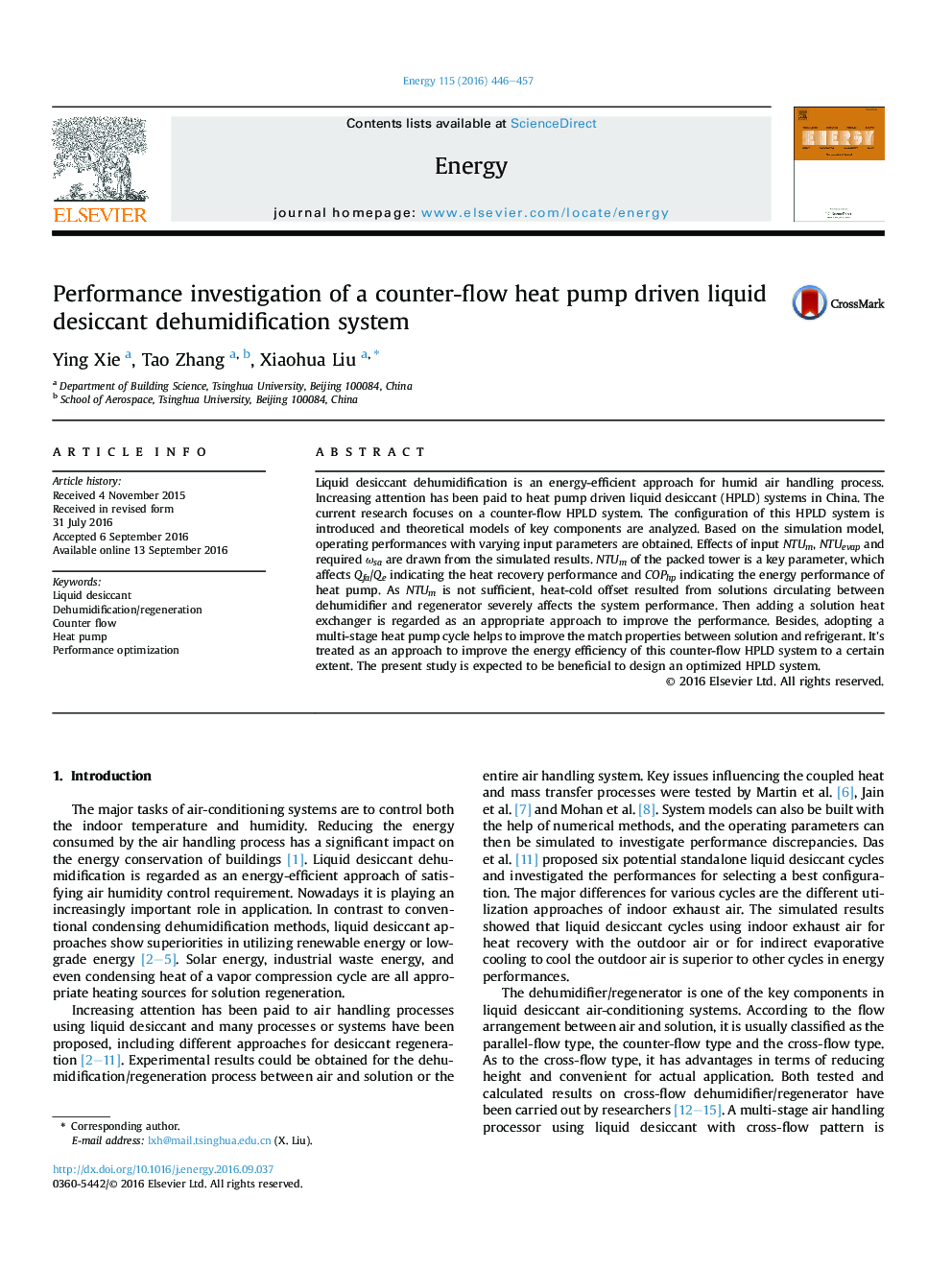| Article ID | Journal | Published Year | Pages | File Type |
|---|---|---|---|---|
| 5476686 | Energy | 2016 | 12 Pages |
â¢A simulation model for a counter-flow HPLD system is built.â¢Effects of NTUm, NTUevap and required Ïsa are drawn from simulation results.â¢NTUm is a key parameter influencing both Qfa/Qe and COPhp.â¢The solution heat exchanger is efficient with an insufficient NTUm.â¢Adopting a multi-stage heat pump cycle helps to improve the system performance.
Liquid desiccant dehumidification is an energy-efficient approach for humid air handling process. Increasing attention has been paid to heat pump driven liquid desiccant (HPLD) systems in China. The current research focuses on a counter-flow HPLD system. The configuration of this HPLD system is introduced and theoretical models of key components are analyzed. Based on the simulation model, operating performances with varying input parameters are obtained. Effects of input NTUm, NTUevap and required Ïsa are drawn from the simulated results. NTUm of the packed tower is a key parameter, which affects Qfa/Qe indicating the heat recovery performance and COPhp indicating the energy performance of heat pump. As NTUm is not sufficient, heat-cold offset resulted from solutions circulating between dehumidifier and regenerator severely affects the system performance. Then adding a solution heat exchanger is regarded as an appropriate approach to improve the performance. Besides, adopting a multi-stage heat pump cycle helps to improve the match properties between solution and refrigerant. It's treated as an approach to improve the energy efficiency of this counter-flow HPLD system to a certain extent. The present study is expected to be beneficial to design an optimized HPLD system.
